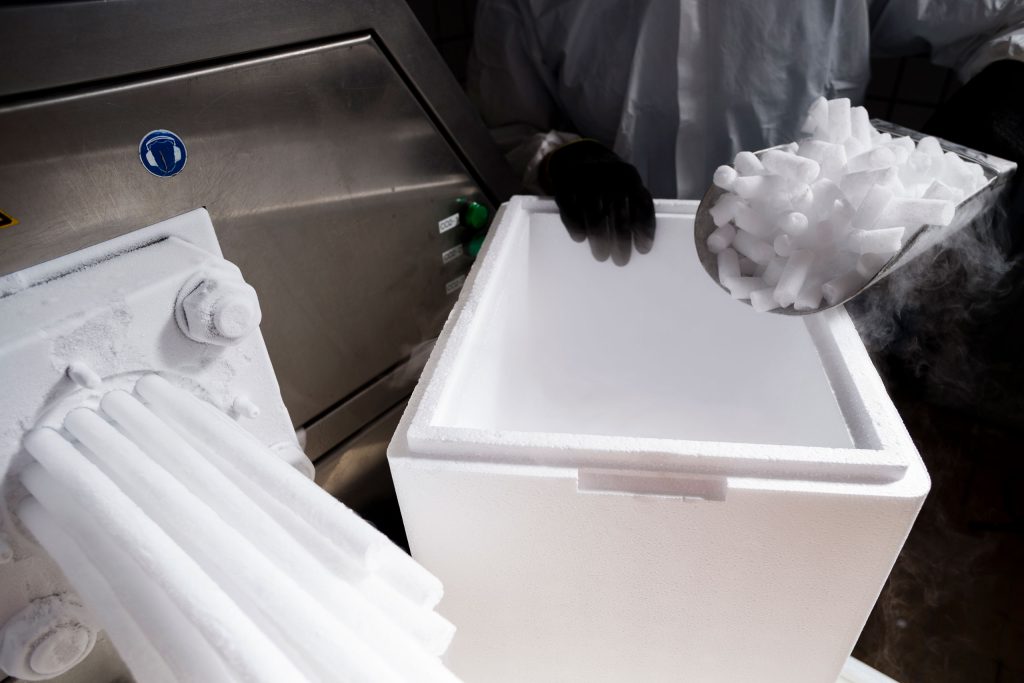White Lion | Dry ice blasting machine | Dry ice guide | Dry ice transport | Transporting dry ice in the car
Transporting dry ice by car is possible in principle, but there are significant differences between small and large quantities, especially when transporting by car. While small quantities can be transported relatively safely, large quantities require special safety precautions and careful planning to avoid health risks. Ultimately, it is important to consider the specific conditions and requirements to ensure the safe transportation of dry ice.
Special precautions must be taken when transporting dry ice in a normal car that does not have a separate driver’s cab. Dry ice is solid carbon dioxide (CO2) that becomes gaseous during sublimation, releasing significant amounts of CO2 into the air. Inadequate ventilation can lead to an increased concentration of CO2, which poses potential health risks.
To ensure the safety of all occupants, only a maximum quantity of up to 10 kg of dry ice may be transported in a vehicle. This restriction serves to minimize the accumulation of carbon dioxide in the interior of the vehicle. With higher quantities, there is a risk that the gas will accumulate in the vehicle and dangerously reduce the oxygen concentration.
It is also advisable to ensure that the vehicle is adequately ventilated during transportation.
Useful information about dry ice, dry ice blasting machines, dry ice blasting systems and dry ice cleaning is conveniently available in our quarterly “Dry Ice News”. Please add your e-mail address to register without obligation. You can revoke your consent at any time with effect for the future. For information on the processing of your data, including for the improvement of our services, please refer to our data protection information.
To minimize the risk of carbon dioxide accumulating inside the vehicle, dry ice may only be transported in large quantities in vehicles that have adequate ventilation or a loading cabin that is separate from the driver’s cab.
It is also important that the containers are securely fixed during transportation to prevent them from slipping or tipping, which in turn contributes to the safe handling of dry ice.
Regular inspections should also be carried out to ensure that the safety precautions comply with the applicable regulations and that any damage can be rectified promptly.


If you regularly need large quantities of dry ice, we recommend our WL Antarctica S.

You are currently viewing a placeholder content from YouTube. To access the actual content, click the button below. Please note that doing so will share data with third-party providers.
More InformationYou need to load content from reCAPTCHA to submit the form. Please note that doing so will share data with third-party providers.
More Information